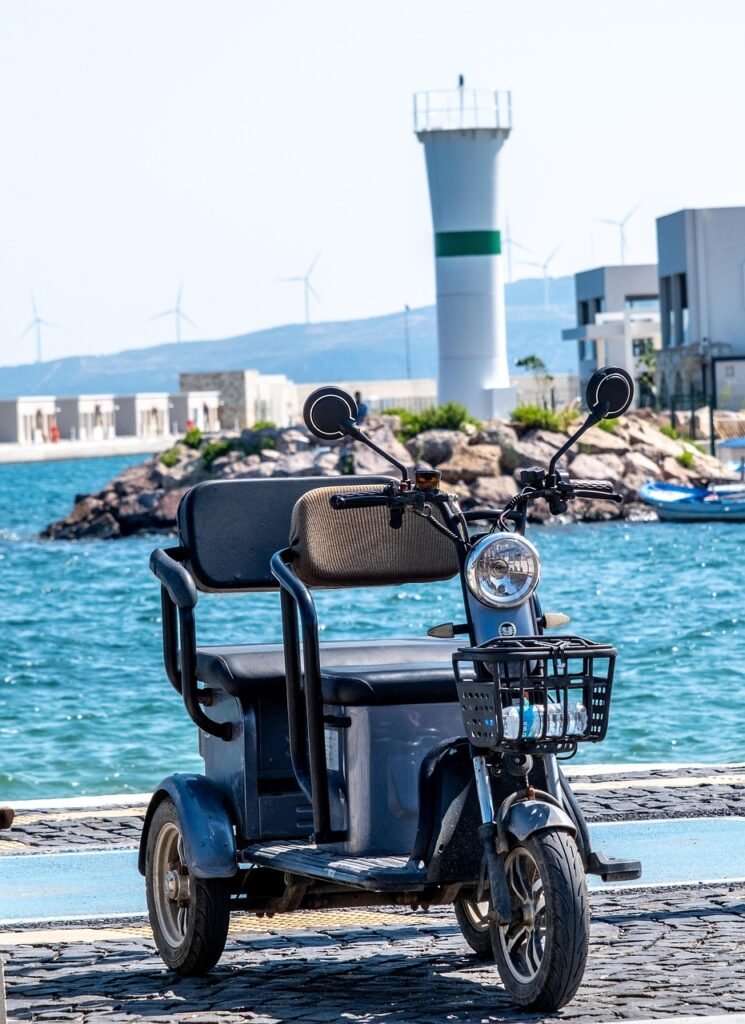1. Capacity, Range & Application Scenarios
Battery capacity is often expressed in Ah (ampere-hours) and Wh (watt-hours), and these numbers directly determine how far a trike can travel on a single charge.
- Ampere-hours (Ah): Measures charge capacity.
- Watt-hours (Wh): Measures actual energy (Voltage x Ah).
A 48V 20Ah battery equals 960Wh, which generally supports 40–50km depending on terrain, load, and temperature. For short-distance urban delivery, a smaller 12Ah battery might suffice. But for rural areas or longer delivery routes, you’ll want at least 20Ah or higher.
Application Guide:
- Urban commuting / light cargo: 48V 12Ah ~ 20Ah
- Rural logistics / long-range transport: 60V 20Ah ~ 40Ah
- Heavy-duty use / hilly terrain: 72V 40Ah+
2. Battery Chemistry Types: What Are Your Options?
Electric tricycles—like those we manufacture at Pandrova Tricycle—commonly use either lithium-ion or lead-acid batteries, depending on different usage needs.
The advantages of lithium-ion batteries include high energy density, lightweight design, long cycle life, low self-discharge rate, and fast charging capability.
Lead-acid batteries are known for their low cost, good safety performance, and strong resistance to low temperatures.
More importantly, when selecting a battery, consider its capacity, typically measured in watt-hours (Wh). For example, depending on terrain and rider weight, a 500 Wh lithium-ion battery can support travel distances of up to 50–70 km per charge—making it a reliable choice for longer commutes, delivery use, or rural mobility.
3. How Long Can a Battery Last?
A frequent question from users is: “How long does the battery typically last?” Under normal use and good maintenance, most batteries have a lifespan of 3 to 5 years, which usually equates to around 1,000 full charge cycles.
A full charge cycle means charging the battery from a low state (like 0% or 20%) all the way to 100%. For instance, charging from 20% to full is considered one complete cycle. However, partial charges—such as topping up from 50% to 100%—count as only half a cycle, which may actually help prolong battery life.
In practical terms, users who frequently recharge after short rides without letting the battery fully drain are likely to experience longer-lasting battery performance compared to those who habitually deplete the battery before charging again.
4.Tips to Prolong Lifespan
To keep your battery performing well over time, it’s important to develop healthy charging habits. At Pandrova Tricycle, we advise not letting the battery fully drain, as deep discharges place unnecessary stress on the cells and shorten overall battery life. A good rule of thumb is to recharge the battery when it drops to around 20–30%.
Also, be sure to unplug the charger once the battery is fully charged. Leaving it connected for extended periods can lead to overcharging, which may gradually degrade battery performance.
Temperature is another key factor in battery health. Batteries operate most efficiently in moderate climates. If you store your tricycle in a garage or outdoors, watch out for extreme temperatures. For instance, charging in very cold conditions can cause irreversible damage, while leaving the battery exposed to direct sunlight may lead to overheating and reduced capacity.Here are the seasonal battery preservation factors.
- Ideal working temperature: 15–30°C.
- In winter, store batteries indoors.
- In summer, avoid direct sunlight and overheating.
- For long-term storage, keep at 40–60% charge and check monthly.
5. How to Select the Most Suitable Battery for Your Tricycle
When selecting a battery for your electric tricycle, it’s essential to first consider your specific riding habits and daily needs. Are you planning to use the tricycle for short local errands, leisure rides, or long-distance commuting? At Pandrova Tricycle, we provide a range of battery capacities tailored to meet different usage demands.
Keep in mind that bigger batteries offer longer range, but they also increase the vehicle’s overall weight, which may influence its stability and maneuverability. If you’re unsure which battery best fits your lifestyle and usage, our team is here to help—just reach out for a personalized recommendation.
For casual riders who use their tricycles occasionally on weekends or for nearby trips, a smaller-capacity battery may be both practical and cost-effective. On the other hand, if you’re using the tricycle frequently or for extended routes, investing in a higher-capacity battery can save you from having to recharge too often. Just be sure to consider how the extra weight may affect your comfort and handling while riding.



